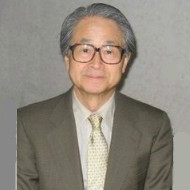


Speech Title: Phosphorylation of the biomolecules enabled to acquire titanium-binding and bone-enhancing ability when coated on the surface of titanium implants
Abstract: Question why titanium alone can bind with living bone has been a mystery in this field for almost 60 years. We have recently found that the phosphoproteins such as casein, phosvitin and many of bone matrix proteins (these are called SIBLING family proteins) bind with titanium, by using titanium beads chromatography. Moreover, when we implanted titanium devices (TW) which were coated with the extracted bone phosphoproteins, remarkable increase in the amount of bone formation was observed comparing with the uncoated titanium devices in one week after implantation. This discovery clearly explained the above-mentioned mystery as follows. When the titanium device is implanted into the living bone, abundant phosphoproteins in this tissue bind with the surface of titanium. Since these proteins are known to contain each a RGD sequence and numerous phosphorylated-serine residues, it is reasonable to assume that precursors of osteoblasts will gather together on the titanium surface and start bone formation rapidly. And now, in this conference we will show the same thing happened when we coated the titanium with "phosphorylated chitin (P-chitin)", instead of SIBLING proteins. We will report the development of the P-chitin and demonstrate that it is a highly useful coating material for titanium implants to accelerate the fixation in bone.